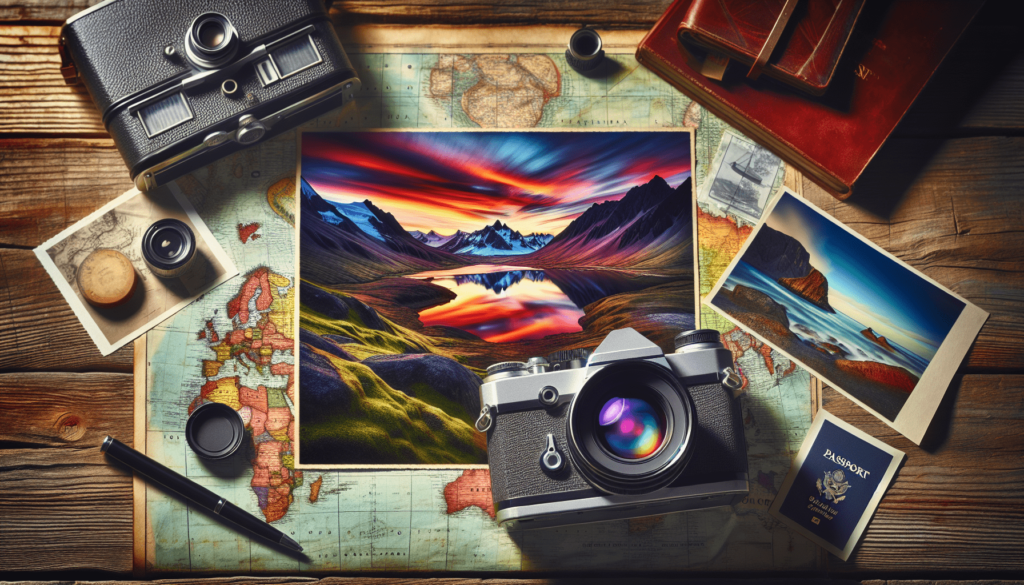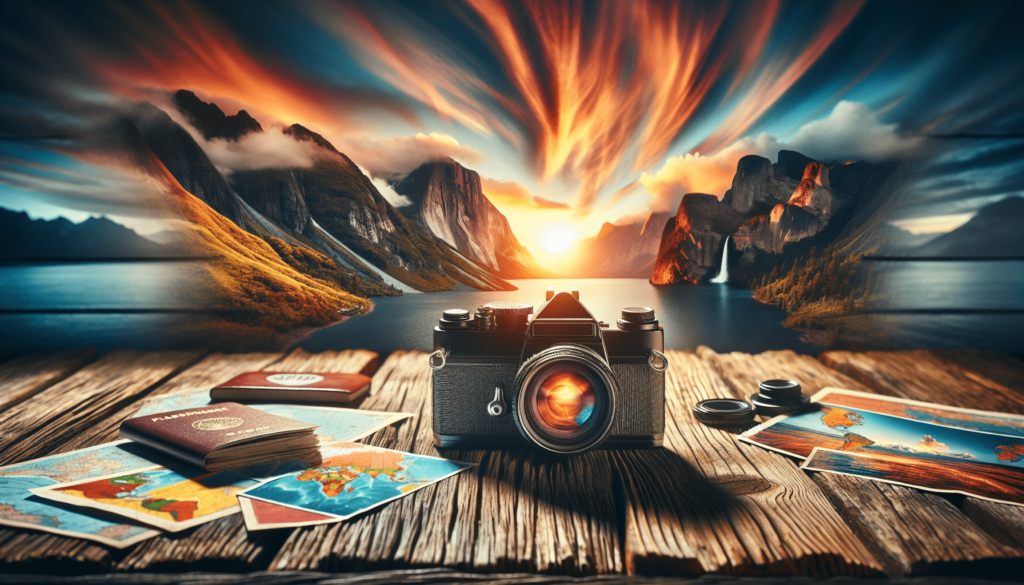Have you ever looked at a stunning travel photograph and felt an instant urge to pick up your camera? There’s something captivating about the way an image can transport you to a different place and time. Travel photography is more than just snapping pictures; it’s about capturing emotions, stories, and experiences that speak to the heart.
DragonfliesAndLadybugs for more.
The Essence of Travel Photography
Travel photography embodies the spirit of exploration and discovery. It’s a powerful medium that allows you to connect with various cultures, landscapes, and people around the globe. When you think about travel photography, what comes to mind? Is it the stunning sunsets over pristine beaches, bustling city streets filled with life, or the serene beauty of nature’s untouched landscapes?
Understanding Different Styles
There are many styles within travel photography, and each offers unique perspectives. You might be drawn to one over another based on what resonates with you.
-
Documentary Photography: This style aims to tell a story or provide a detailed account of experiences, often showcasing the culture and lifestyle of the place.
-
Landscape Photography: If capturing vast, scenic vistas excites you, this style focuses on the beauty of natural settings.
-
Street Photography: This style captures candid moments in public places, showcasing the vibrant essence of life in urban areas.
-
Portrait Photography: Here, the emphasis is on capturing individuals or groups, reflecting their expressions and emotions in a cultural context.
Understanding these styles can help you determine which resonates with you and your photographic journey.
Essential Gear for Travel Photography
What you carry plays a significant role in your travel photography. Choosing the right gear can enhance your ability to capture stunning images without weighing you down.
Cameras
While smartphones have made photography accessible, investing in a good camera can significantly improve your travel photos.
-
DSLR Cameras: If you’re serious about photography, a digital single-lens reflex (DSLR) camera with interchangeable lenses offers versatility and quality. Canon and Nikon are popular brands to consider.
-
Mirrorless Cameras: These are lighter and more compact than DSLRs, making them great for travel. Sony and Fujifilm offer excellent options in this category.
-
Compact Cameras: If portability is essential, a high-quality compact camera can still deliver impressive images.
Lenses
Your choice of lens can dramatically alter the creative possibilities in your photography.
-
Wide-Angle Lenses: Perfect for capturing expansive landscapes or cityscapes.
-
Prime Lenses: Known for their sharpness and low-light capability, prime lenses are excellent for portraits and details.
-
Telephoto Lenses: These allow you to zoom in on distant subjects, making them ideal for wildlife or candid street photography from a distance.
Accessories
To truly enhance your photography, consider these accessories:
-
Tripod: Essential for stability, especially in low-light situations or for long exposure shots.
-
Filters: Polarizing filters can help reduce glare while enhancing colors, especially when photographing water or skies.
-
Extra Batteries and Memory Cards: Always have backups to ensure you capture every moment without frustration.

Techniques for Capturing Stunning Travel Photography
Knowing your gear is just the beginning. There are several techniques to keep in mind that can take your photography to the next level.
Composition
Composition is critical in photography. Here are a few fundamental principles:
-
Rule of Thirds: Imagine dividing your frame into a 3×3 grid. Placing your subject at the intersections can create a balanced and engaging image.
-
Leading Lines: Use natural lines in your environment (like roads, rivers, or architectural features) to guide the viewer’s eye through the frame.
-
Framing: Look for elements within your scene that can create a natural frame around the subject, drawing attention and adding depth.
Lighting
Natural lighting can dramatically impact your photographs.
-
Golden Hour: The hour just after sunrise and before sunset provides soft, warm tones that can enhance your landscapes and portraits.
-
Blue Hour: The hour just before sunrise and after sunset creates a beautiful, cooler palette, ideal for cityscapes and night photography.
-
Avoid Harsh Midday Sun: The harsh light can create unflattering shadows, so consider shooting in shaded areas or waiting for softer light.
Action and Emotion
Capturing movement and emotion adds a dynamic element to your travel photography.
-
Candid Shots: Instead of posed photographs, candid images of people in their natural surroundings often convey deeper stories.
-
Action Shots: Don’t be afraid to capture people engaging in their daily activities, whether it’s a street vendor, a child playing, or locals celebrating a festival.
Post-Processing Basics
Editing is another vital aspect of photography that can elevate your images.
Software Options
There are several tools available that cater to different skill levels:
-
Adobe Lightroom: A popular choice for photographers, Lightroom offers an intuitive interface for organizing and editing your images.
-
Adobe Photoshop: While more advanced, Photoshop provides powerful options for detailed edits and enhancements.
-
Mobile Editing Apps: If you prefer editing on-the-go, apps like Snapseed or VSCO offer excellent editing capabilities directly from your smartphone.
Basic Edits
You don’t need to go overboard with editing. Here are some basic adjustments to consider:
-
Cropping: Sometimes, a slight crop can improve your composition significantly.
-
Adjusting Exposure: Balance the brightness and contrast to enhance your image.
-
Color Correction: Make sure the colors in your photo reflect the scene as you experienced it.

Finding Inspiration
Just like any artistic pursuit, finding inspiration is crucial for growth.
Connect with Other Photographers
Engaging with fellow photographers can spark fresh ideas and techniques. Consider joining:
-
Photography Groups: Local meetups or online communities (like forums and social media) can be great spaces to share and learn.
-
Workshops: Participating in workshops led by professional photographers provides hands-on experience and feedback.
Study the Masters
Take time to analyze the work of renowned travel photographers. What techniques do they use? How do they compose their images? Learning from the greats can help you refine your own style.
Navigating Ethical Considerations
Travel photography also comes with ethical responsibilities.
Respect Cultural Sensitivities
When photographing people or cultures, it’s essential to be respectful. Always ask for permission when possible, especially in intimate or vulnerable situations.
Be Mindful of Your Impact
Travel can have environmental impacts. Consider how your photography practices affect the locations you visit. Stick to marked paths, avoid littering, and promote sustainable tourism.

The Benefits of Travel Photography
Engaging in travel photography offers numerous rewards beyond the images you create.
Personal Growth
Traveling and photographing new environments can broaden your horizons and challenge your perspectives. It encourages you to step out of your comfort zone, leading to personal development.
Shared Experiences
Photographs allow you to share your experiences with friends and family, keeping memories alive long after your travels.
Building a Portfolio
If you’re considering a career in photography, travel images can help build your portfolio. Unique travel photography can attract clients and showcase your versatility.
Setting Goals for Your Travel Photography
What do you want to achieve with your travel photography? Setting specific goals can help you stay focused and motivated.
Lifestyle Goals
Consider what type of lifestyle you want your photography to reflect. Do you want to travel extensively or focus on local adventures? Your goals will guide your choices and help you find your niche.
Skills Development
Determine specific skills you would like to build. This could range from mastering technical aspects, improving your composition, or learning advanced editing techniques.

Preparing for Your Next Adventure
As you gear up for another travel photography adventure, planning becomes essential.
Research Your Destination
Before you travel, spend time researching your destination. Understand the culture, historical sites, and local customs. Knowing what to expect can lead to better photo opportunities.
Create a Shot List
Consider crafting a shot list based on your research. This can help ensure that you capture important landmarks, events, or cultural experiences during your visit.
Packing Wisely
When preparing your gear, think about what you truly need. Avoid overpacking, which can weigh you down. Include essentials, but don’t forget to bring a versatile lens or two.
Final Thoughts
Embarking on a journey through travel photography can transform the way you see the world and express yourself. Remember that practice makes perfect. The more you shoot and experiment, the better you’ll become. Don’t be afraid to make mistakes—they’re often the best teachers.
Your camera is more than just a tool; it’s a gateway to understanding diverse cultures and landscapes. Embrace the adventure, and let your photography tell your unique story. Truly, capturing the world is a rewarding journey, one click at a time.
Capturing the World: A Journey Through Travel Photography


Comments are closed